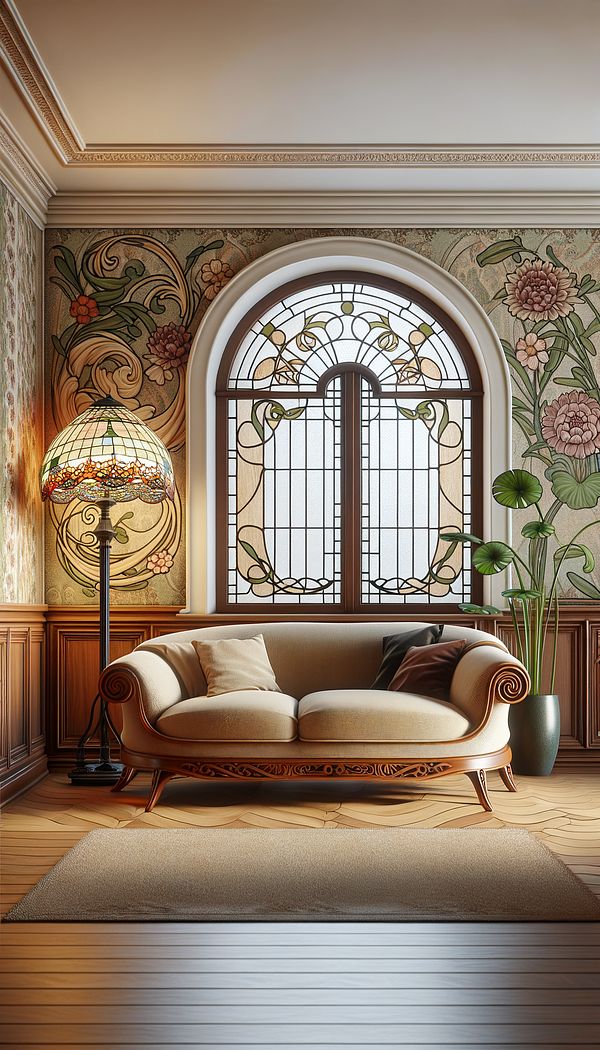What is Art Nouveau?
Art Nouveau is an international style of art, architecture, and applied art, especially the decorative arts, that was most popular between 1890 and 1910.
Description
Art Nouveau, which translates to 'New Art' in French, is a distinctive style of art that emerged towards the end of the 19th century and flourished until the beginning of World War I. Characterized by its use of long, sinuous, organic lines, Art Nouveau was a reaction against the academic art, eclecticism, and historicism of 19th-century architecture, art, and design. This style embraced dynamic, undulating forms and intricate linear designs.
Art Nouveau is known for its emphasis on craftsmanship and the incorporation of thoroughly modern, often nature-inspired, motifs. It took inspiration from the natural environment, incorporating floral and other plant-based elements in a way that was both ornate and stylized. This style was applied across a wide range of mediums, including architecture, furniture, glassware, graphic arts, and interior design. In interior design, Art Nouveau made its mark with flowing curved patterns, stained glass windows, and beautifully detailed furniture and decorations.
One of the defining features of Art Nouveau is its attempt to harmonize with the natural environment. This is not only evident in the themes and motifs used but also in the materials chosen and the way spaces were designed to be integrated with their surroundings. Art Nouveau designers aimed to create a total work of art (Gesamtkunstwerk) that includes every aspect of decor to achieve a unified interior environment. This principle of design was truly innovative for its time and contributed significantly to the development of modern art and architecture.
Usage
Art Nouveau can be observed in various architectural landmarks, such as Victor Horta's Hotel Tassel in Brussels and Hector Guimard's Paris Metro entrances. In interior design, it's exemplified by elaborate furniture pieces, decorative objects, and detailed wallpaper designs that feature natural motifs. Tiffany lamps, with their intricate leaded glass shades, are also iconic examples of Art Nouveau design. The movement has influenced modern design by prioritizing aesthetic form and detail, encouraging future designers to explore organic shapes and themes.
FAQs
-
What are the key characteristics of Art Nouveau?
The key characteristics include organic, flowing lines; intricate, detailed patterns; and motifs drawn from nature, particularly plants and flowers. The style emphasizes craftsmanship and often features stylized forms that blend structure with decoration.
-
How did Art Nouveau influence modern design?
Art Nouveau's emphasis on organic shapes, detailed craftsmanship, and integration of form with function paved the way for later design movements such as Art Deco and Modernism. It encouraged designers to explore new materials and techniques, focusing on aesthetics and harmony with nature.
-
Can Art Nouveau elements be incorporated into contemporary interior design?
Yes, Art Nouveau elements can be beautifully incorporated into contemporary interior design. Incorporating Art Nouveau-inspired furniture, wallpapers, or light fixtures can add a touch of elegance and historical depth to modern spaces, blending old-world charm with modern style.
Practical Application
When incorporating Art Nouveau elements into contemporary interior design, consider using flowing, organic lines in your furniture choices or adding decorative elements like stained glass or intricately patterned wallpapers. Focus on detail and craftsmanship to capture the essence of the style, ensuring that these elements harmonize with the overall design of your space for a cohesive and elegant look.
-
Design Styles478 articles
-
Furniture Types599 articles
-
Decorative Techniques322 articles
-
Color & Patterns154 articles
-
Historical Periods & Movements150 articles
-
EmbossedEmbossed refers to a surface decorated with a raised or recessed design.
-
Welsh CupboardA Welsh Cupboard is a traditional piece of furniture originating from Wales, characterized by its unique combination of storage and display sections.
-
MarquetryMarquetry is the art of applying pieces of veneer to a structure to form decorative patterns, designs, or pictures.
-
GradientA gradient is a gradual transition of color or texture.
-
Pure Aniline LeatherPure aniline leather is the highest quality of leather, known for its natural look and soft feel.
